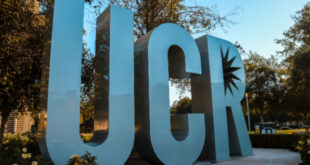UC Riverside and the San Bernardino City Unified School District are trying to solve the district’s chronic teacher shortage.
Both entities recently began a teacher residency program that pays tuition, provides living expenses, and a stipend of approximately $32,000 according to a statement on UC Riverside’s website.
Anyone who completes the program will have a job teaching in the San Bernardino school district,
The program, which began recruiting applicants in the spring, is limited to people who have at least a bachelor’s degree. Participants are able to receive a teaching credential in one year, along with “intensive” mentoring, the statement reads.
“Across California and the nation, we are facing a shortage of qualified teachers, especially in critical areas like special education, dual language instruction, math, and science,” said Frances Valdovinos, director of teacher education at UC Riverside’s School of Education, in the statement. “This partnership gives future teachers an unprecedented level of support, while helping San Bernardino schools meet staffing needs.”
UC Riverside is one of the largest universities in the University of California system, with more than 26,000 students as of last fall.
This is not the first time UC Riverside has tried to solve its teacher shortage by getting first-time students certified quickly.
Faced with a severe teacher shortage in the Coachella Valley, UC Riverside’s Palm Desert campus have put together a program that allows students to earn their master’s in education, as well as their teaching credentials. They can also pursue their teaching credential exclusively.
The program, run by the UC Riverside School of Education, can provide state teacher credentials for several subjects.
Scheduled to start this month, the classes can be completed in one year.
“Given the (population) growth in the Coachella Valley, school districts there will be recruiting teachers for a long time,” said Valdovinos in a statement released when the program was announced. “Bringing our program to UC Riverside’s Palm Desert campus means we can help curtail the teacher shortage immediately, and into the future.”
The program with San Bernardino City Unified is well-timed, because the district expects nearly 200 teachers to resign or retire this year, said Robert Morales, the district’s human resources director.
“We are extremely proud of this partnership with UC Riverside,” Morales said in the statement. “We need a pipeline of talented, dedicated teachers who understand our community, and who are ready to serve it. This residency (program) is a game changer.”
Neither Morales nor Valdovinos returned calls seeking further comment.
The teacher shortage is not confined to the Inland Empire. It’s a nationwide problem, and it will get worse if something to reverse the trend is not done soon, according to a March study by the Learning Policy Institute in Palo Alto.
The institute found more than 400,000 teaching positions in the United States that were not filled, or were being filled, by teachers who were not properly certified for their assignments. That is about one in eight teaching positions nationwide, according to the institute, which conducts research to improve education at all levels.
The institute also found that, despite having spent more than $2 billion during the last 10 years on teacher workforce development, scholarships and residency programs, California doesn’t have enough qualified teachers to fill its classrooms.
A teacher shortage leads to larger class sizes, fewer courses, and heavier workloads for teachers.
Locally the current shortage has been made worse by a decline in people graduating from college with degrees in education, a trend that began in the early 1990s and continues today. Low pay, and less-than-ideal working conditions have also contributed to the decline.
Fixing a teacher shortage is difficult because multiple factors are involved, said Jake Poore, director of communications for Growing Inland Achievement, a Redlands nonprofit.
Growing Inland Achievement tracks education data in Riverside and San Bernardino counties, and uses that information to determine where the Inland region ranks with similar markets throughout the country.
Its data used by school districts in both counties.
“This issue is complex, especially now because some districts face budget reductions even while population growth in the region continues to rise,” Poore said in an email. “Solutions require collaboration across K–12 and higher education. They also require policy systems that expand access to credentialing.
The residency program established by UC Riverside and San Bernardino City Unified is a good way to approach getting more teachers into K-12 classrooms, according to Poore.
“It’s a promising model,” Poore said. “It addresses immediate staffing shortages and long-term workforce diversity. It recruits and prepares men from historically underrepresented backgrounds for careers in K–12 education across the Inland Empire.”
“It’s also important to recognize that addressing teacher shortages isn’t only about filling vacancies,” Poore continued. “Ensuring access to high-quality development (of teachers) is crucial for supporting current educators, and for improving the quality of instruction.”
The Rialto Unified School District has a program similar to the one being conducted by UC Riverside and San Bernardino City Unified.
Project Impact is designed to get more male minority teachers working in the district, which has 29 schools and approximately 25,500 students, said Rhea McGiver Gibbs, lead strategic agent for Rialto Unified.
“This is a critical way to get people through this program and credentialed to teach,” Gibbs said of Project Impact, a two-year program that is also limited to people with a four-year degree. “The teacher shortage got real bad during the pandemic and it’s never really recovered. I’ve been working in education for 35 years, and I’ve never seen a shortage like the one we’re dealing with now.”
 IE Business Daily Business news for the Inland Empire.
IE Business Daily Business news for the Inland Empire.


